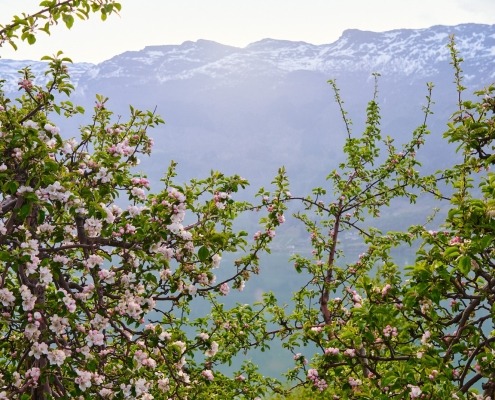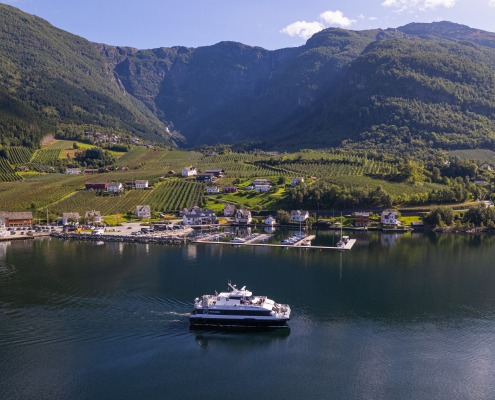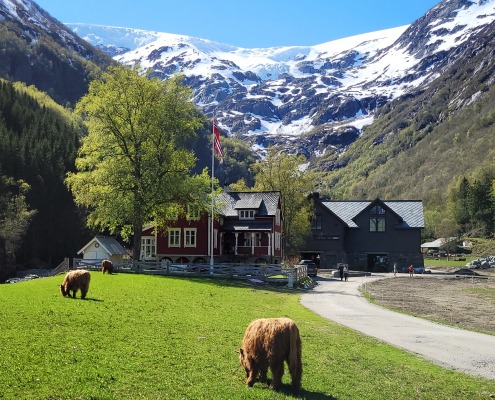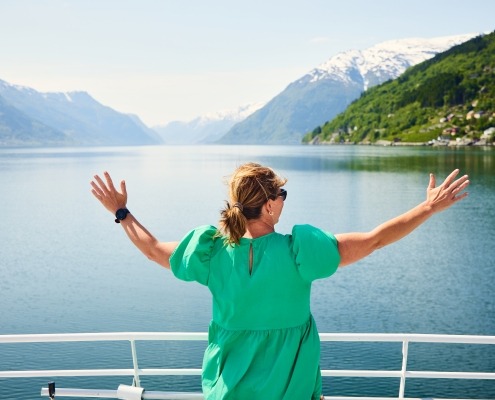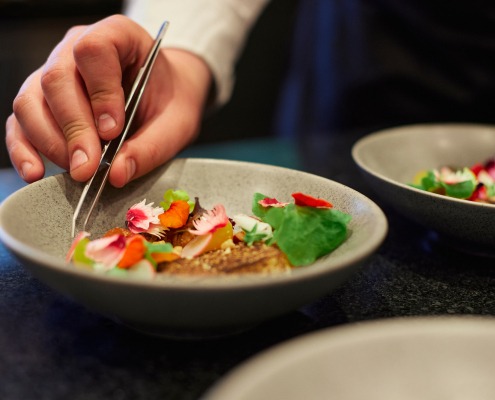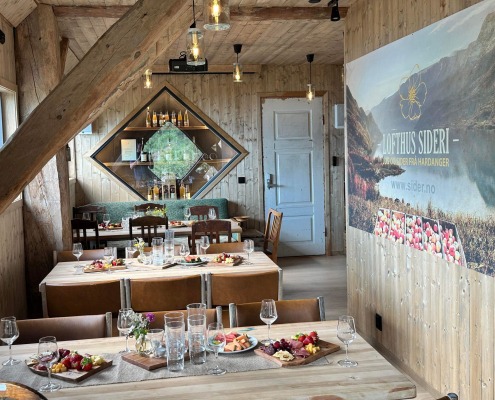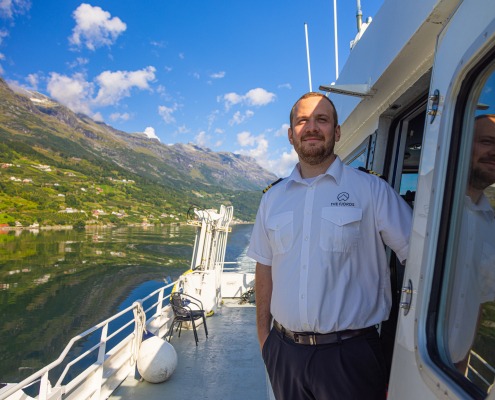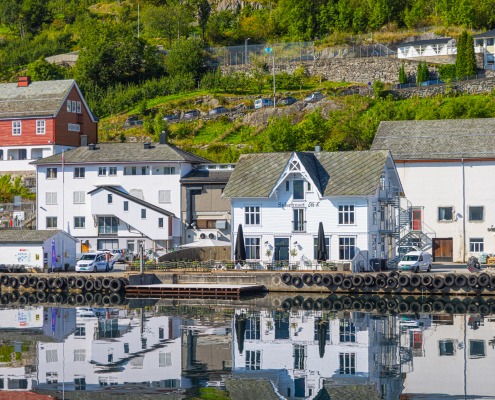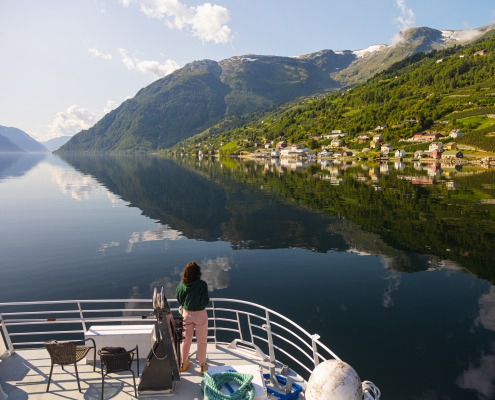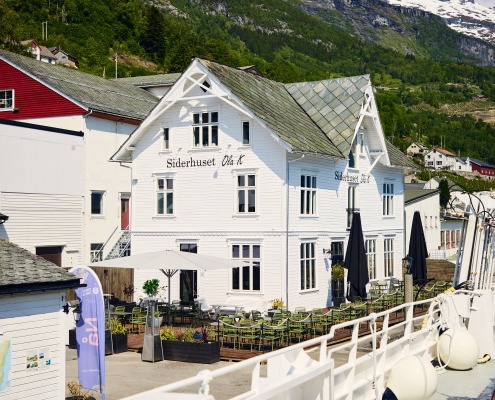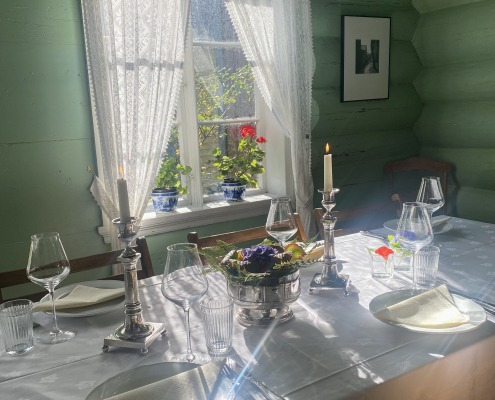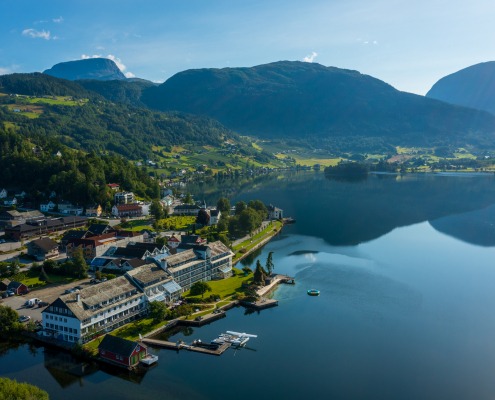When the boat docks at Nå, it is hard to miss Siderhuset Ola K. The large, white-painted, wood-panelled building, whose reflection dances on the dark waters of the fjord, has been a meeting place for locals and visitors for over a century. First, as a general store, now as a restaurant, with seating both indoors and outside. By the way, the general store has just moved into new premises, for what would a tiny farming village be without a local store where everyone knows everyone?
“We started the restaurant in 2021, because we wanted to offer a culinary experience to match the quality of the cider from Hardanger,” explains Odd Einar Tufteland. He is Head Chef and Restaurant Manager, and was already running two well-known restaurants in Bergen when he spotted an unmet market opportunity in Nå.
“If it hadn’t been for the cider production and today’s go-ahead cider producers, we wouldn’t have started the restaurant here. For us, it’s important to make food that goes well with the cider. And we base our choice of dishes on local produce,” he says.
That local produce could be organic chicken from Homlagarden and fresh-caught seafood from the mouth of the fjord. And local fruits and berries – of course.
“We also have a local artisanal baker, who conjures up delicious pies, cakes and other baked goods, like the Hardanger speciality krotakaker – a type of flatbread made with rye flour. Cured and dried meats are also sourced from the farms surrounding the fjord, where the livestock enjoy a good quality of life,” he says.

